by GEORGE ROMNEY (1734-1802)
Large 18th Century portrait of Mrs Elizabeth Rattray, oil on canvas by George Romney. Excellent quality and condition circa 1790 portrait of Elizabeth Rattray mother-in-law of Admiral Joseph Yorkes. Presented in its original antique gilt frame with plaque.
Measurements: 38" x 33" framed approx
Artist Biography
George Romney was the second son of John Romney, a cabinet-maker in the Lincolnshire town of Dalton-in-Furness, in a family of 10 boys and one daughter. He started working in his father's shop at the age of 10, where it is said that he spent his time making sketches of his father's employees and copying illustrations from a collection of engravings entitled Art's Masterpiece. In 1751, Romney's father apprenticed him for four years to the painter Edward or Christopher Steel (both names are on record), who had studied in Paris under Van Loo. Apprentices tended to be largely ignored by their employer, but Romney would later recall how much he had learned while under Steel's direction.
On October 14 1756, Romney married Mary Abbot. The newly-weds were apart for lengthy periods when Romney had to accompany Steel on trips to Yorkshire, and in 1757 he paid a modest indemnity to break his contract. He then acquired a studio in Kendal and embarked on a career as an itinerant portrait painter. However, his prices were modest and he had to paint a large number of portraits to make an adequate living. At the same time, he tried his hand at some original compositions, such as a Landscape with Figures or Pulling a Tooth by Candelight, which eventually earned him enough to enable him to move to London in March 1762, leaving his wife and two infant children in Kendal.
In 1763, Romney was awarded a Society of Arts cash prize of 25 guineas - a considerable sum at the time - for his painting of the Death of General Wolfe. The following year he travelled to France, where he met Joseph Vernet, and to Italy. In 1765 he received a second prize for his Death of King Edward. In 1773 he returned to Italy, remaining there for two years in order to study antique statuary and the works of Raphael, Titian and Correggio. In Rome he came into contact with Fuseli and his circle, whose influence would prove critical in terms of Romney's subsequent 'exotic' canvases, such as his illustrations of Aeschylus of 1780. He returned to London in July 1775, and moved into a studio previously belonging to the recently deceased painter Cotes. By then Romney's work was beginning to attract the interest of highly-placed figures, including the Earl of Richmond and Lord Thurlow, the latter declaring that 'London is divided into two camps - one for Reynolds and one for Romney. I am in Romney's camp'.
Because of his rivalry with Reynolds, Romney failed to gain admission to the Academy and his sitters were obliged to visit him at home. Despite this, he rapidly established a reputation with the aristocracy, although he continued to resist charging high prices for his work, demanding only 25 guineas for a 'standard' portrait 36 x 30 in (90 x 75 cm) and 30 and 50 guineas for larger versions of 42 x 32 in (105 x 81 cm) and 60 x 48 in (150 x 120 cm) respectively. Even a full-length portrait only cost 80 guineas. However, Romney's total output during his years in London amounted to an astonishing two thousand portraits and assorted canvases. His work at this period revealed distinct Neo-Classical leanings, and although his portraits still looked 'natural' rather than poeticised, they were largely frontal in approach and inspired by Roman low reliefs. Examples include The Leveson-Gower Children of 1776-1777 and The Beaumont Family of 1777-1779.
Romney's favourite model for almost a decade was Emma Hart, later to become Lady Hamilton. Romney was largely responsible for her transformation into a society figure and, in his Memoirs, Romney's son lists 24 formal portraits of Emma Hart/Hamilton, represented as anything from a bacchante to Joan of Arc, as well as a considerable number of studies and sketches.
Around 1790, Romney appears to have been closely involved in the development of the Shakespeare Gallery and provided Boydell with two major compositions - a Shakespeare as a Child and The Tempest. By now, he had become increasingly preoccupied with monumental painting and had a large house built in Hampstead, completed in 1797, to enable him to produce works on a grander scale. However, his pace of work over two decades had affected his health and he was ultimately obliged to leave London and return to his family in Kendal. After moving to a larger property nearby, he died in November 1802 following a stroke.
In its use of line, rhythm and fresh clear colour, Romney's immense body of work made a substantial contribution to the art of portraiture. He exhibited in London from 1763 to 1772, at the Society of Artists (of which he was a member) and the Free Society, but ceased ex













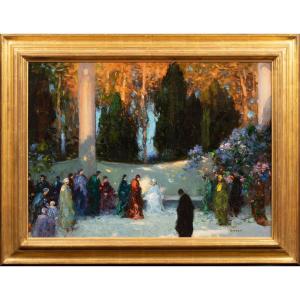
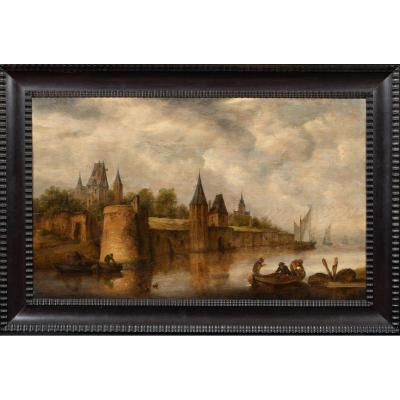


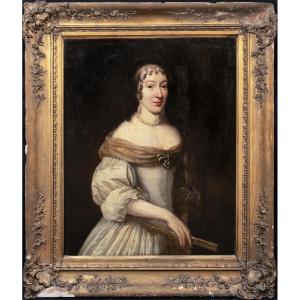
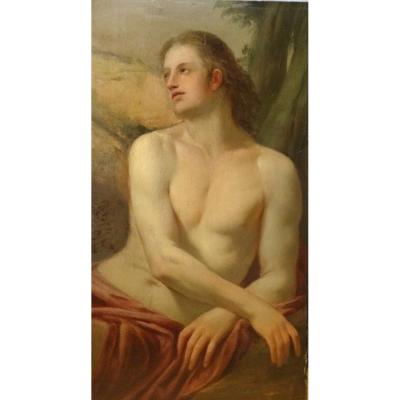
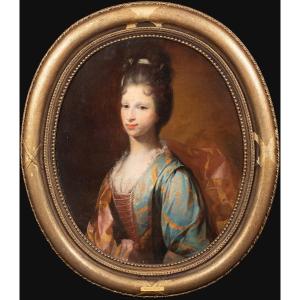


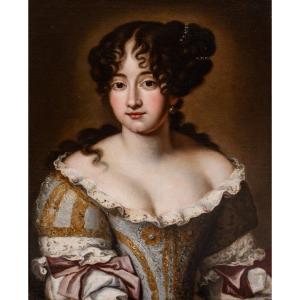






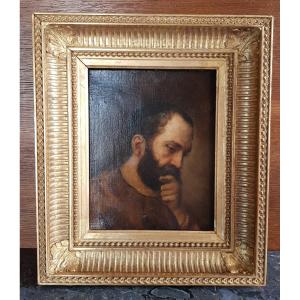




 Le Magazine de PROANTIC
Le Magazine de PROANTIC TRÉSORS Magazine
TRÉSORS Magazine Rivista Artiquariato
Rivista Artiquariato